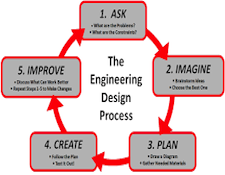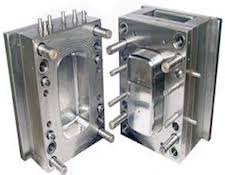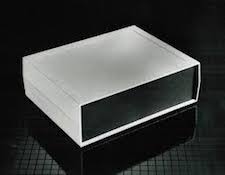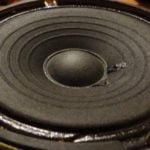It’s the time of year for saving money!
Over the last thirty years I have consistently dealt with engineers as part of my job. I’ve interacted with engineers of many types – design, structural, mechanical, quality control, and packaging to name a few. On the whole, I’ve always been impressed by their ability to create something new. They typically excel in math and science because those are the essential requirements when designing and building something.
 Yet, however, I’ve also worked with some engineers who sometimes lose sight of the fact that the things they design must, at some point, also be built. For example, I was once working with a new engineer who designed a formed metal part and had the tolerances specified at three decimal places. One decimal place would have certainly sufficed for this design and the downside is that it made the part far more difficult, and decidedly more expensive to manufacture. This guy was fresh out of college and was still pretty new. He had yet to realize the realistic aspect of product design. Building something to last forever might be a noble endeavor but it is not always the most cost effective and realistic thing to do.
Yet, however, I’ve also worked with some engineers who sometimes lose sight of the fact that the things they design must, at some point, also be built. For example, I was once working with a new engineer who designed a formed metal part and had the tolerances specified at three decimal places. One decimal place would have certainly sufficed for this design and the downside is that it made the part far more difficult, and decidedly more expensive to manufacture. This guy was fresh out of college and was still pretty new. He had yet to realize the realistic aspect of product design. Building something to last forever might be a noble endeavor but it is not always the most cost effective and realistic thing to do.
I think the people who design and build audio components are also a really smart and inventive group of people. I’m constantly amazed at how they are able to wrangle an ever increasing sonic improvement and still maintain some modicum of cost control. Yes, I hear the comments – I’m certainly not saying that audio components are inexpensive. We all know that is not the case. In my estimation, the fact that some of the more “budget friendly” components cost and sound as they do is remarkable. Because whatever may be thought about the cost of any component available, regardless of the price point, believe me, it could cost a lot more.
 An engineer designing an audio component has several challenges that must be faced. They probably first start with an idea of the features this new component should have and at what production cost. Concurrently, they must try and come up with a design that delivers the best sonics in the smallest and most affordable package. Because let’s face it, many audio companies today are looking to design smaller components that are multi-function (so they take up less space) and can be manufactured and sold at a reasonable cost. Of course, the trick is determining what “reasonable cost” might actually be – for some, reasonable is probably very expensive.
An engineer designing an audio component has several challenges that must be faced. They probably first start with an idea of the features this new component should have and at what production cost. Concurrently, they must try and come up with a design that delivers the best sonics in the smallest and most affordable package. Because let’s face it, many audio companies today are looking to design smaller components that are multi-function (so they take up less space) and can be manufactured and sold at a reasonable cost. Of course, the trick is determining what “reasonable cost” might actually be – for some, reasonable is probably very expensive.
In addition to features and performance, engineers must consider manufacturability. How simple or difficult will the thing be to produce? All audiophiles love the sleek graceful curves of a machined aluminum faceplate of an amp, preamp or DAC. Yet machining that faceplate is vastly more expensive and time consuming than bending sheet metal on a press brake and painting or anodizing it for final appearance.
Another consideration is packaging. Quite obviously, the goal is to design a package that protects the product at the least possible cost. So why do some companies go to such lengths to make the packaging so over the top beautiful? Why not do so? If the component is going to sell for thousands, or tens of thousands of dollars, would it be at all impressive if it simply came in a cheap cardboard box? All that beautiful packaging, velvet bags, wooden or lacquered presentation boxes, and all the rest are for one reason – marketing. Regardless, a packaging engineer was very likely responsible for the design.
 Then there is the constant struggle to find and develop new ways to produce something. Speaker manufacturers, for instance, are constantly looking for better materials and ways to produce drivers for their products. Stiffer and lighter must almost be the holy grail when it comes to driver design. All that research and development – a fancy way of saying “let’s try this” – comes at a cost, and that cost must be shouldered somehow and by someone.
Then there is the constant struggle to find and develop new ways to produce something. Speaker manufacturers, for instance, are constantly looking for better materials and ways to produce drivers for their products. Stiffer and lighter must almost be the holy grail when it comes to driver design. All that research and development – a fancy way of saying “let’s try this” – comes at a cost, and that cost must be shouldered somehow and by someone.
Consider plastics. Ever wonder why you don’t see more plastics in audio components? Manufacturing wise, plastics have several advantages. One is cost. A housing made out of plastic could be vastly less expensive that its metal counterpart. Another is that the molding process yields a net shape. Think those graceful curved fronts. Parts could be made very robust – materials like heavy walled, glass filled nylon, for instance, would create a very sturdy housing for an amp. It could also be shielded with materials for blocking out RF and EMI contamination, which is always an issue in high performance equipment.
So why not plastics? Simple, the cost of tooling. Most plastic parts are designed to be made in volumes in the tens of thousands to the millions of parts. In an audio scenario, by the time the cost of tooling, which for injection molding can easily run into six figures, is considered, amortizing tooling costs into the piece part price of the finished product would make it basically unsellable. Why? Sales volume. How many high performance companies today are selling a single component in the hundreds of thousands of units over even the life of the component, much less in a year’s time?
 The other, pretty obviously really, aspect of a plastic part is acceptability. How willing will the average audiophile be to purchase an expensive amplifier with the case made of plastic? I should also mention that in other industries, plastic housings are used all the time on components that are as expensive as any of our stereo equipment, if not more so.
The other, pretty obviously really, aspect of a plastic part is acceptability. How willing will the average audiophile be to purchase an expensive amplifier with the case made of plastic? I should also mention that in other industries, plastic housings are used all the time on components that are as expensive as any of our stereo equipment, if not more so.
For the average audiophile, however, all those considerations have very little merit. What we want is a component we can afford, that looks attractive in our home, that sounds great and at the end of the day, is one we enjoy using. Anyone who finds that product, to whatever extend they find it, rest assured that an engineer did his or her job.








